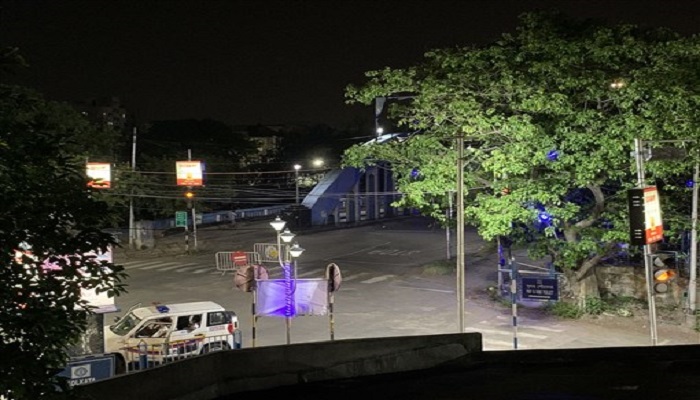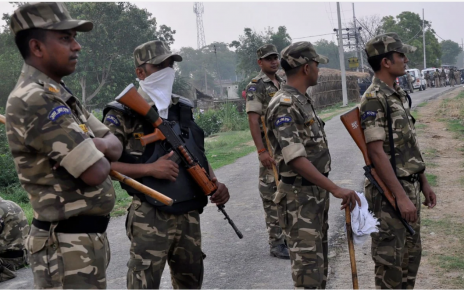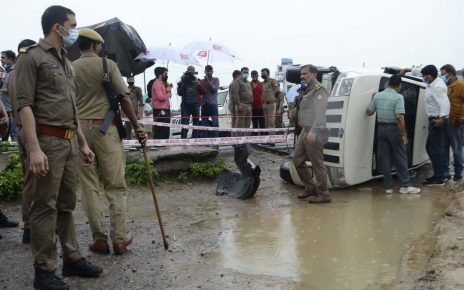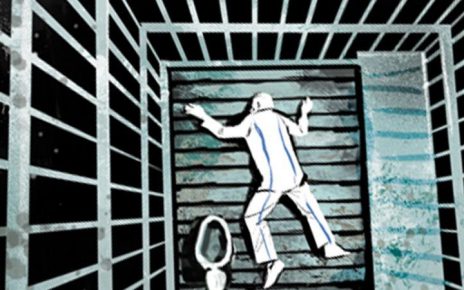Jadaliyya
16 July 2020
By Jinee Lokaneeta
George Floyd’s death, the outrage and protest against it, and renewed movement for police and prison abolition has resonated in different corners of the world, including the Indian state of Tamil Nadu. In Sathankulam, protests erupted after a father-son duo Jayaraj and Bennix were allegedly brutally tortured to death by the Tamil Nadu police. On 19 June, the police claimed that the shopkeepers had failed to close their shop by 8 pm in violation of the COVID-related curfew. Following an altercation, the police then arrested the shopkeepers. Witnesses report that the two were arrested separately and were stripped and brutally sexually tortured with batons/lathis at the police station. The father and son subsequently died in a hospital due to the injuries.
The horrific nature of the injuries and deaths in this routine interaction between the police and shopkeepers in the midst of a pandemic has created a spotlight on custodial torture in India. Protests erupted in Tamil Nadu and #JusticeforJayarajandbennix has taken over social media. The outrage is unprecedented. Yet, custodial torture has been a routine and pervasive feature of Indian democracy. The demand for justice in case of Jayaraj and Bennicks raises fundamental questions of how torture continues to persist in a country where the government claims to abide by the rule of law.
The National Campaign Against Torture (NCAT) in its annual report released on 25 June stated that in 2019, five people died every day in custody. Reports of the National Human Rights Commission (NHRC) between 2001 and 2010 showed a consistent figure that 1,504 people died in police custody (about 150 per year) and 12,727 people (1,414 per year) died in judicial custody. Torture in India includes physical beating with batons, boots, and belts; electric shock on private parts; use of chilies; waterboarding, and rape. Police also resort to beating the soles of the feet with conveyor belt or flour bag strips to hide the marks of its evidence. Stripping, humiliation, and threatening the torture of family members also occur. Despite the widespread reports of torture, the official National Crime Research Bureau reports on crime in India continue to point to illness and suicide as the predominant causes for custodial deaths. The fact that the bureau only added physical assault as one possible reason for custodial death in 2015 reflects a culture of denial of torture.
The death and torture of Jayaraj and Bennix cannot be understood as the aberrant behavior of a few bad cops. In my book, The Truth Machines, I recount the experience of terror suspects in the Mumbai bombing case in 2006 and the Mecca Masjid case in Hyderabad in 2007. In both cases–which notably involved Muslim suspects–the magistrates and doctors who have a legal obligation to ensure the safety of those under their custody failed to inquire into the police torture that took place. Similarly, in the Jayaraj-Bennix case, following their arrest, the victims were reportedly taken to the hospital where the doctor allegedly stabilized them just enough to be taken to the magistrate. Despite continuous bleeding from their rectums where the batons had been inserted repeatedly, the magistrate–who is required to inquire into whether a person was tortured or not–reportedly observed them from the balcony and sent them on remand to a jail further away from the police station. Thus, even though both the required medical examination and magistrate hearing took place, the procedural steps served to create what I call a scaffold of the rule of law. The scaffold merely masks police violence by following the procedures rather than actually ensuring that violence does not take place.
Torture in India is linked to the enforcement of order, itself aimed at maintaining social hierarchies and foreclosing dissent.
However, both the jurisprudence as well as the NHRC focus more on custodial deaths than the torture that is normalized in everyday policing. The police try to utilize methods of torture that do not result in severe injuries or deaths, and state institutions rarely focus on the structural conditions that enable this kind of torture. Police officers I interviewed readily acknowledged the use of torture. They argue that it is acceptable within a legal system full of loopholes. For instance, even when confessions recorded by a police office are inadmissible, the law allows for recovered items during the course of interrogation to be admitted in a case, thereby implicitly tolerating torture. Institutional redress for torture also remains focused at best on compensation while legal provisions such as Section 197 (1)) of CrPC requiring prior sanction for prosecution against a police/state official further entrenches immunity. Such longstanding impunity has resulted in torture becoming a tool for the assertion of power as in the Jayaraj-Bennix case.Yet it is not just the police, or the overseeing magistrates and doctors who are responsible for torture. Current institutional and legal regimes remain woefully inadequate. India has not ratified the UN Convention against Torture despite having signed it in 1997. An analogous domestic bill has been languishing in the legislative process. There are of course constitutional and statutory safeguards. The Indian Supreme Court in the DK Basu case (1997) used an expanded notion of due process to acknowledge the pervasiveness of torture and created safeguards such as arrest/custody memo to involve the family/public as a witness to the arrest, a right to a lawyer even at the stage of interrogation, and regular medical examinations. And the National Human Rights Commission emerged as the main semi-state body to document and monitor the inquiry into custodial death cases.
Finally, torture in India is linked to the enforcement of order, itself aimed at maintaining social hierarchies and foreclosing dissent. Extraordinary laws such as Unlawful Activities Prevention Act targets dissenters and minorities, while the Armed Forces Special Powers Act in parts of the northeast and Kashmir enables torture and extrajudicial killings with further impunity. They do so because these extraordinary laws evade routine safeguards against extended detention and delay in bail. A similar impulse is seen in overzealous enforcing of the pandemic curfew against the poor, Muslims, caste oppressed, and other marginalized sections such as shopkeepers like Jayaraj and Bennicks. The refusal to give bail to vulnerable prisoners despite an inability to avoid overcrowding also makes these conditions inhuman and torturous. The outrage regarding the Jayaraj-Bennicks will hopefully enable justice in this specific case as is already evident in the arrest of the involved police officers thanks to the intervention of the Madras High Court. But it should also force a fundamental reexamination of policing and its relationship to violence in India as a liberal democracy.




